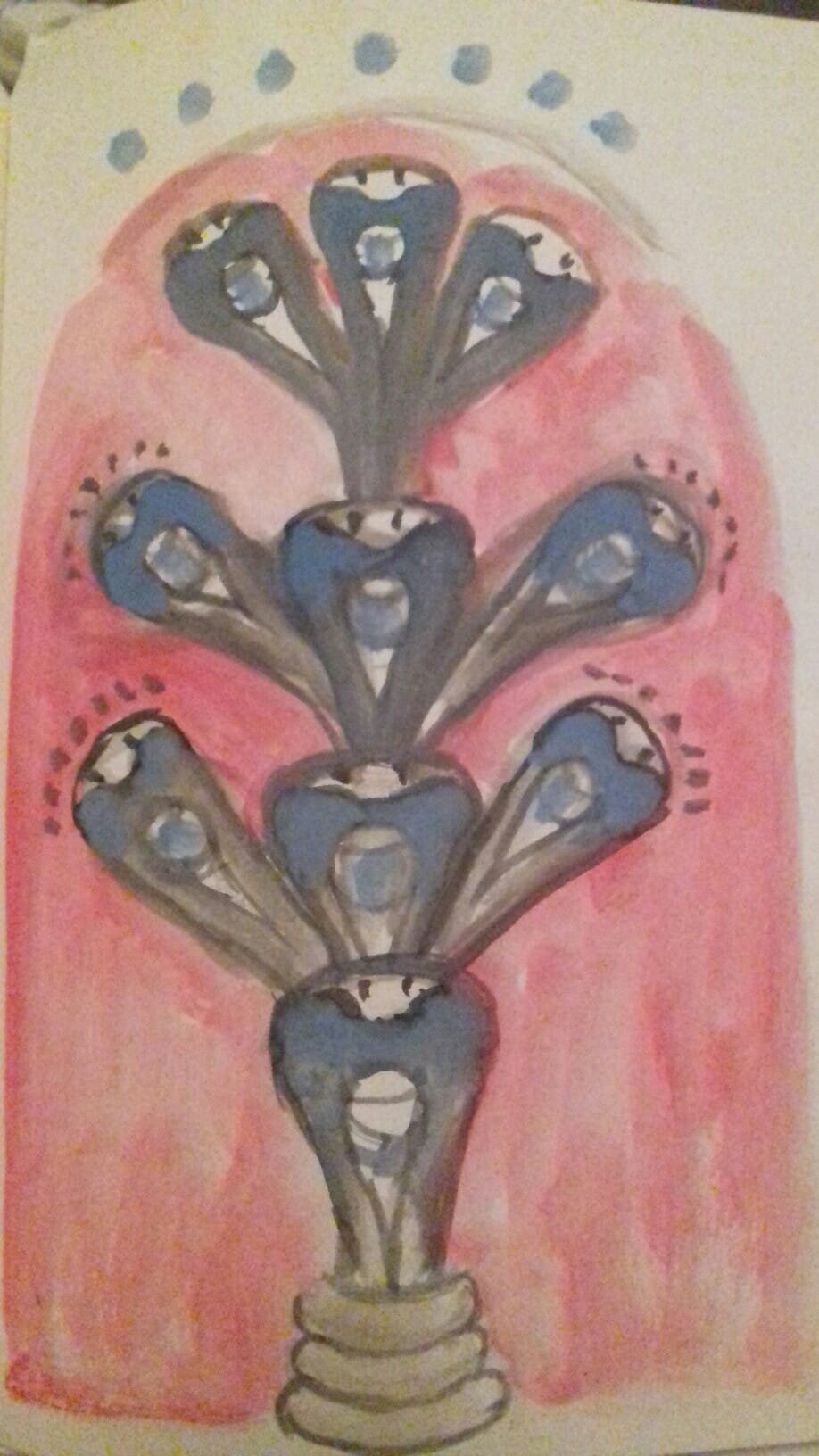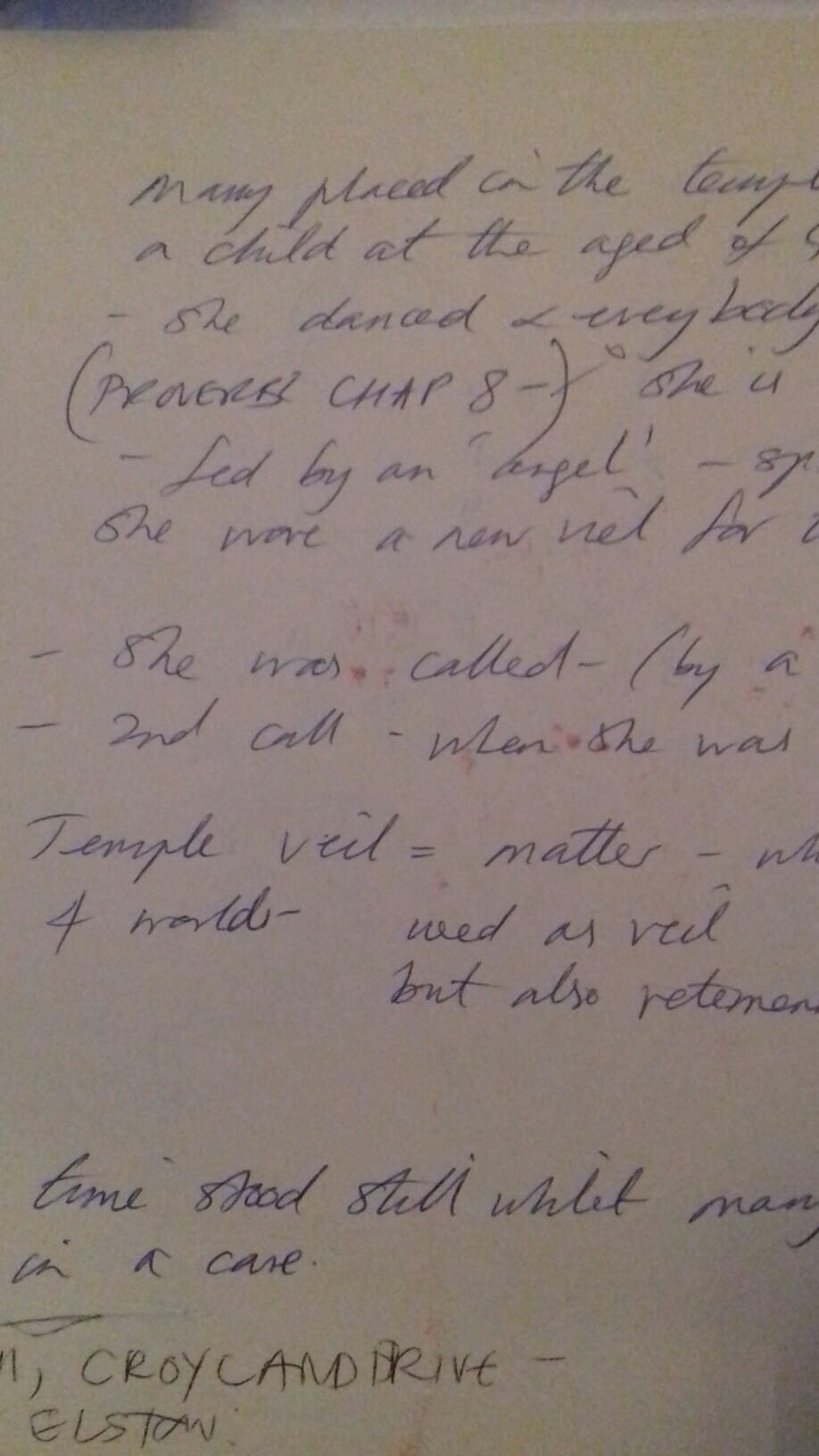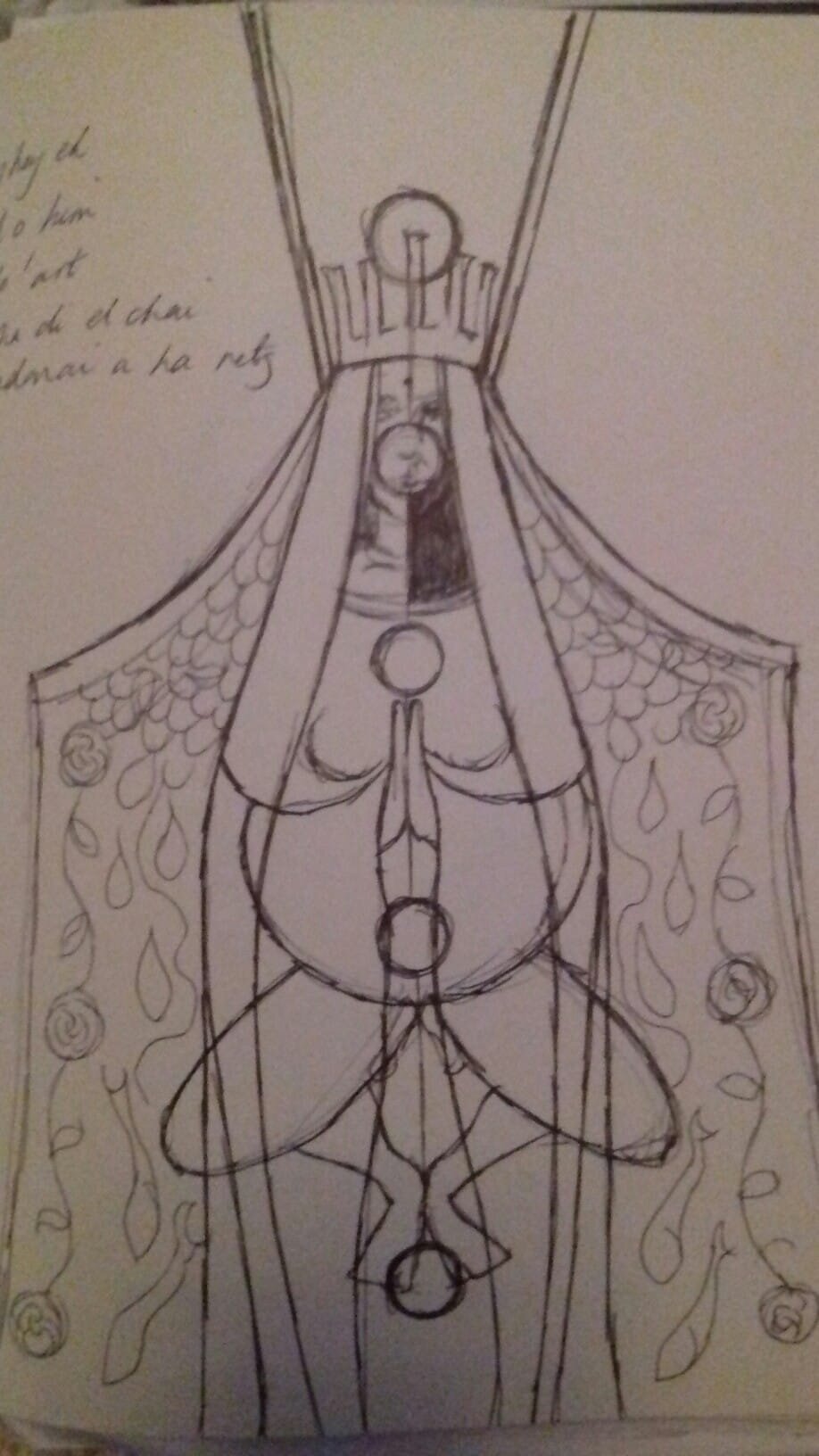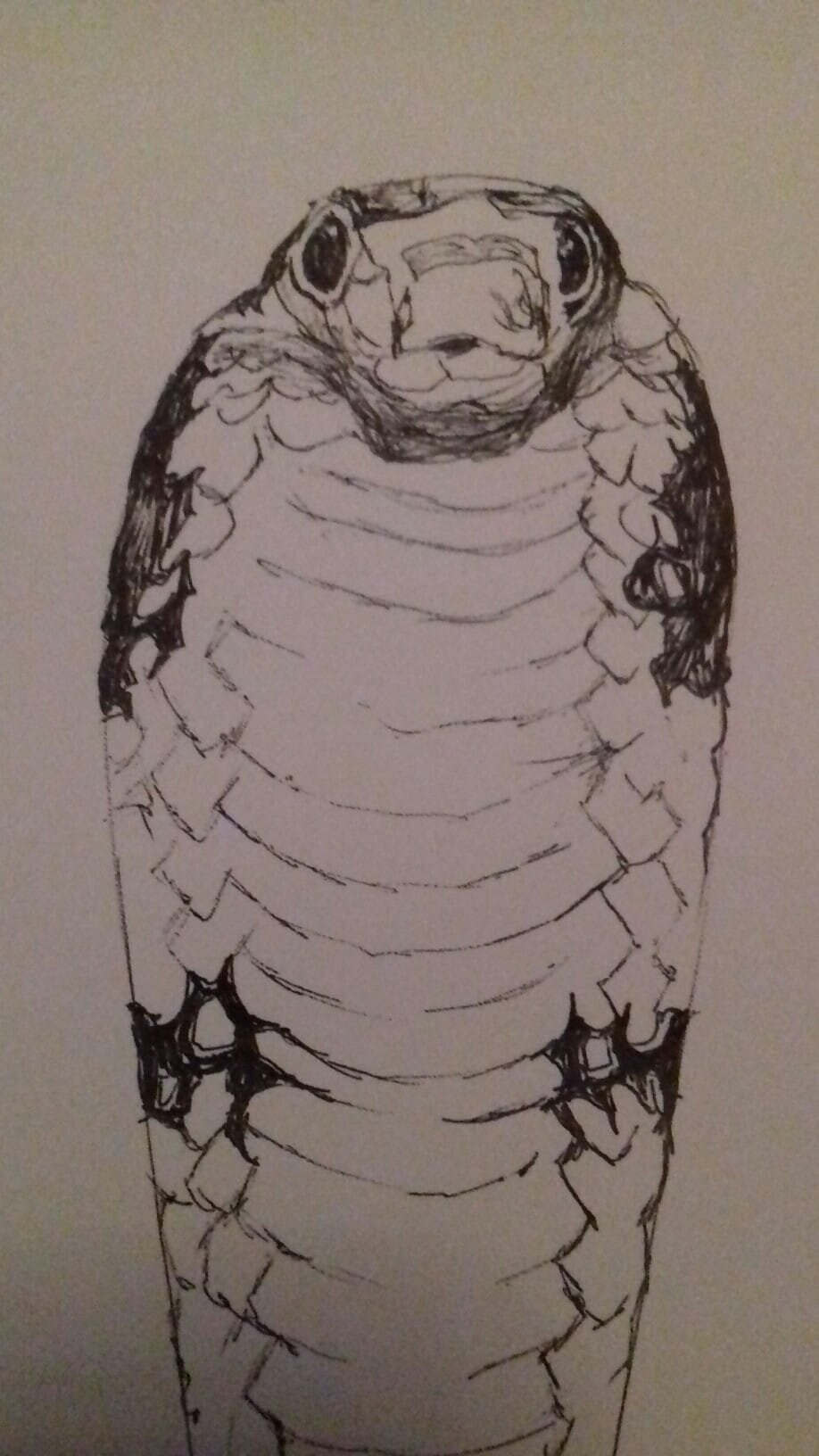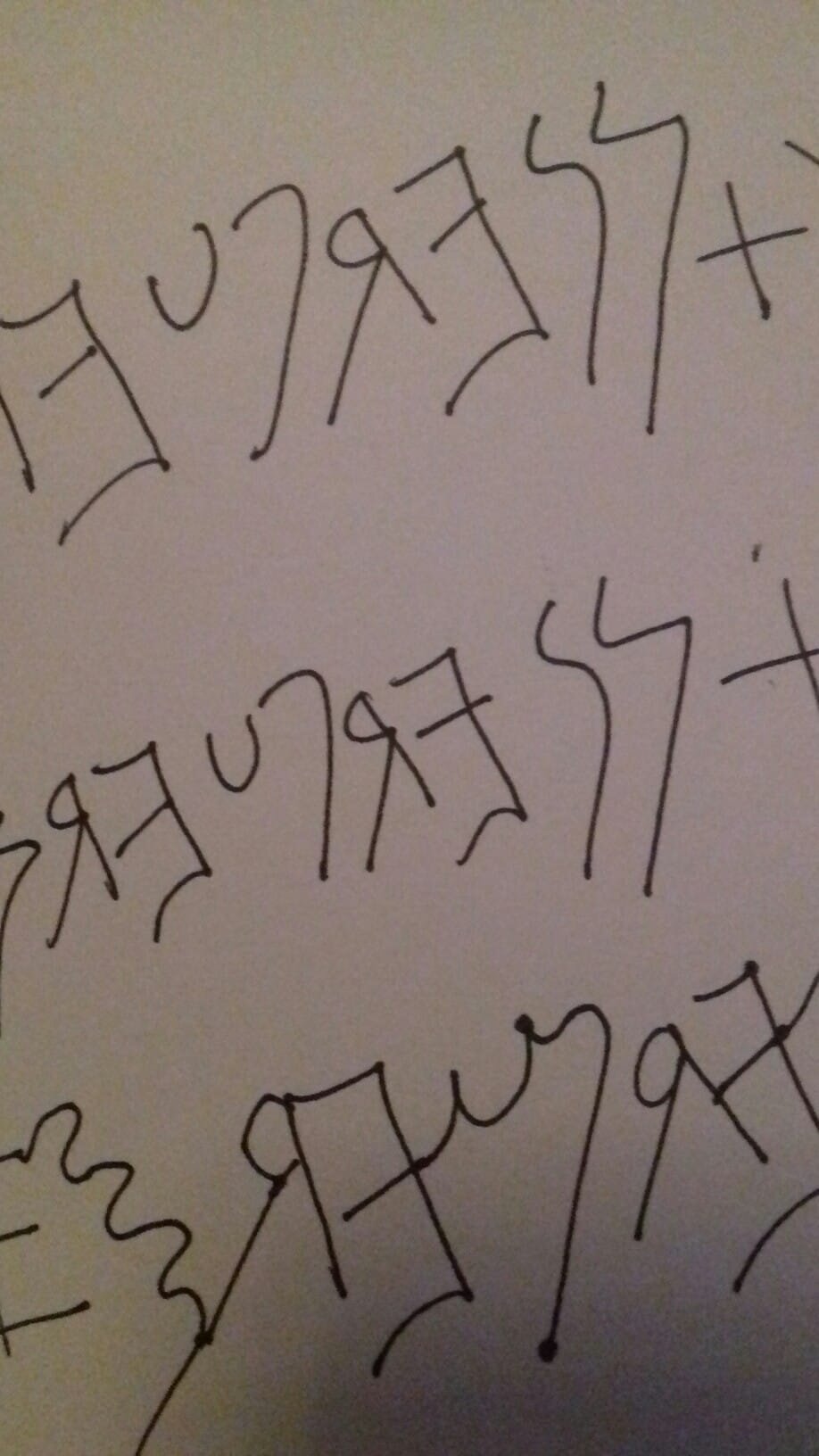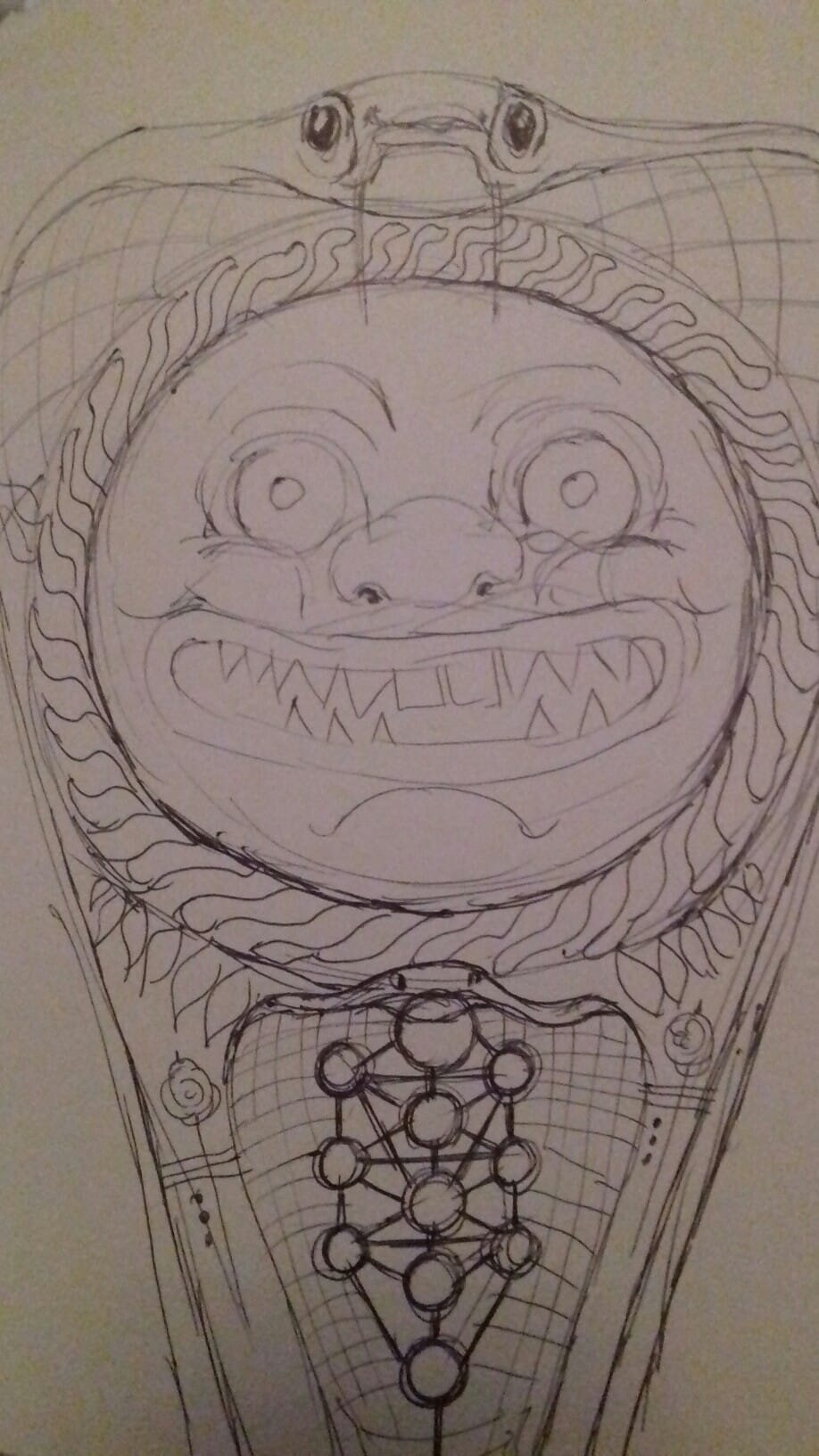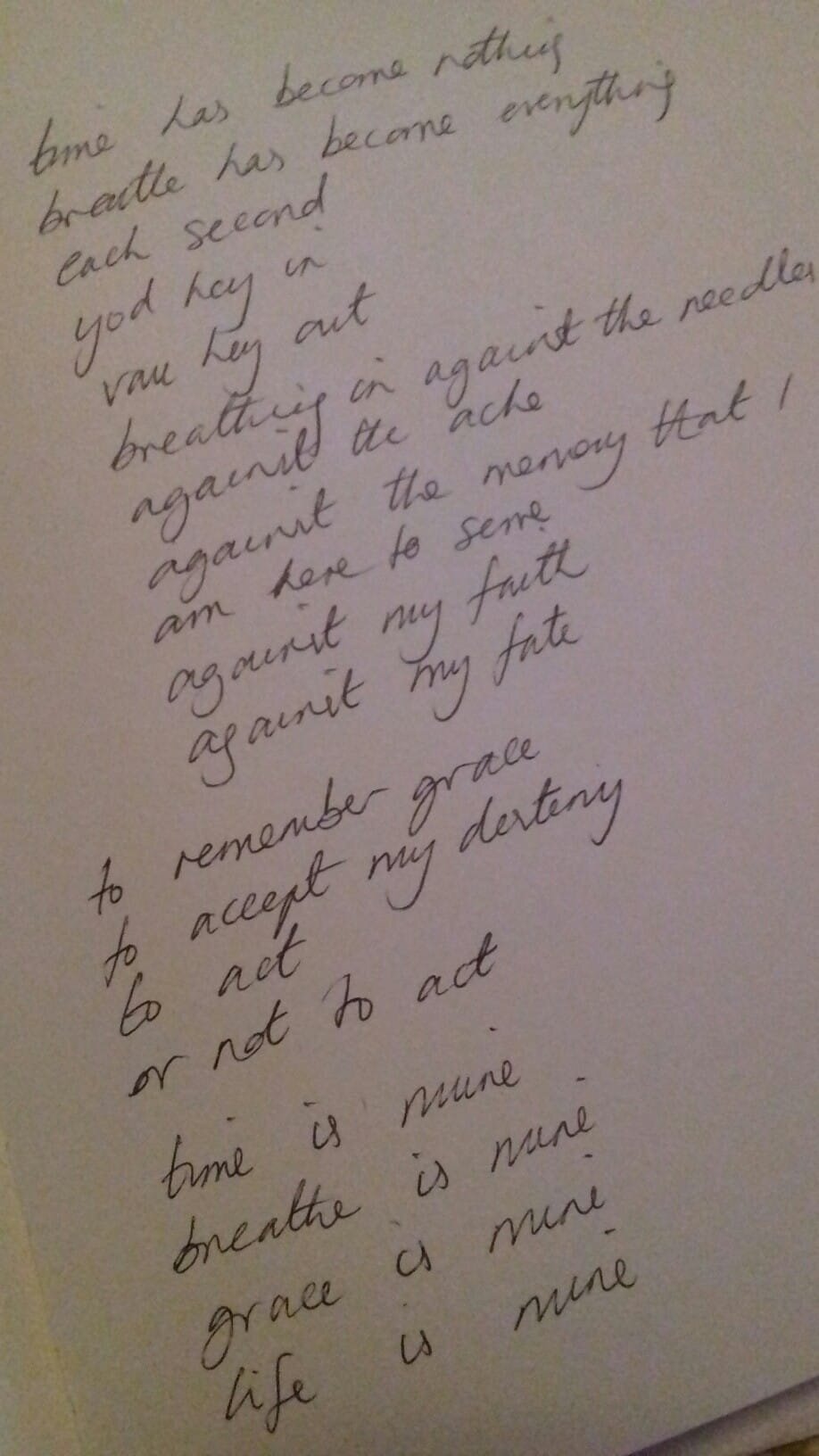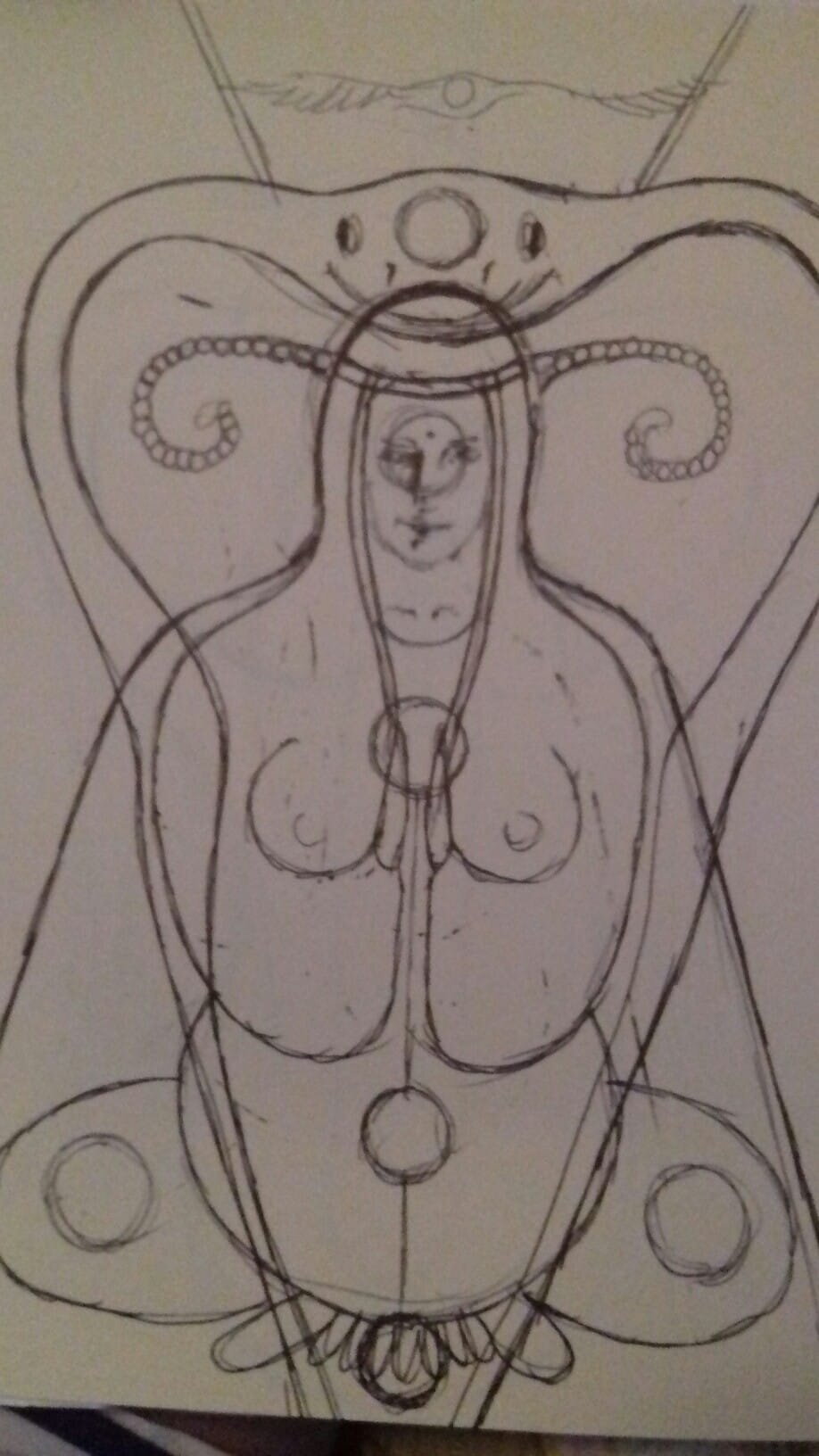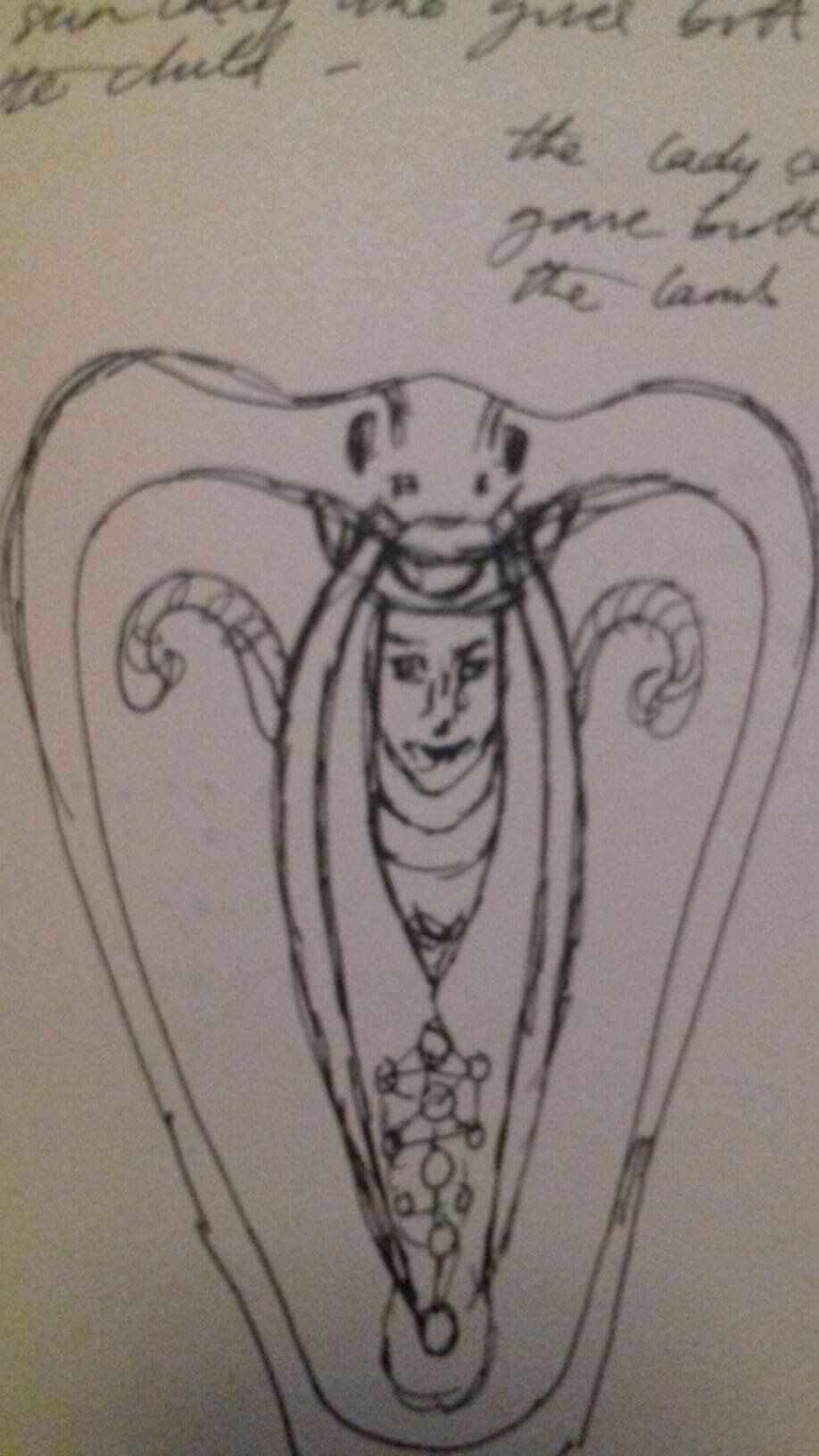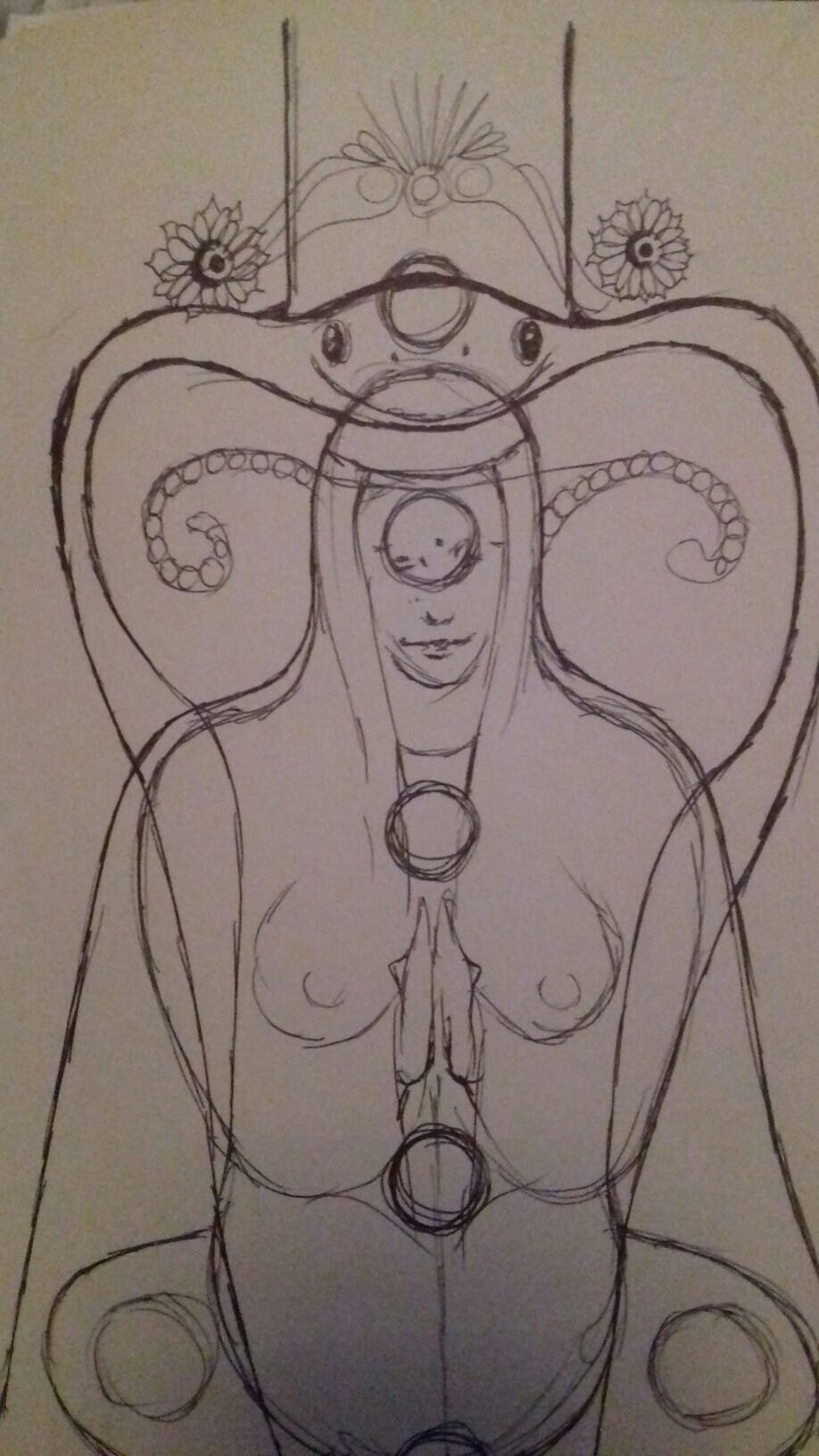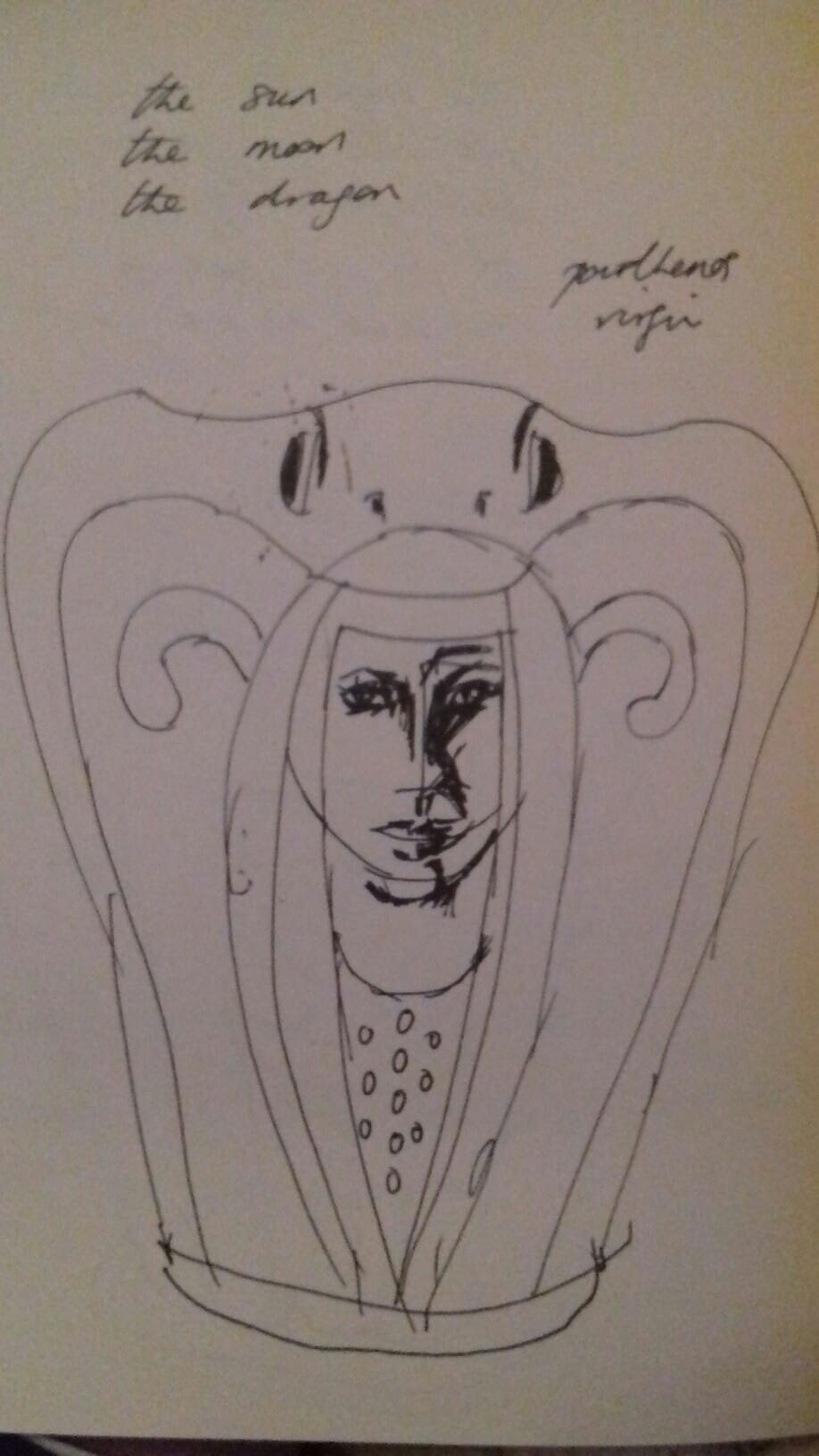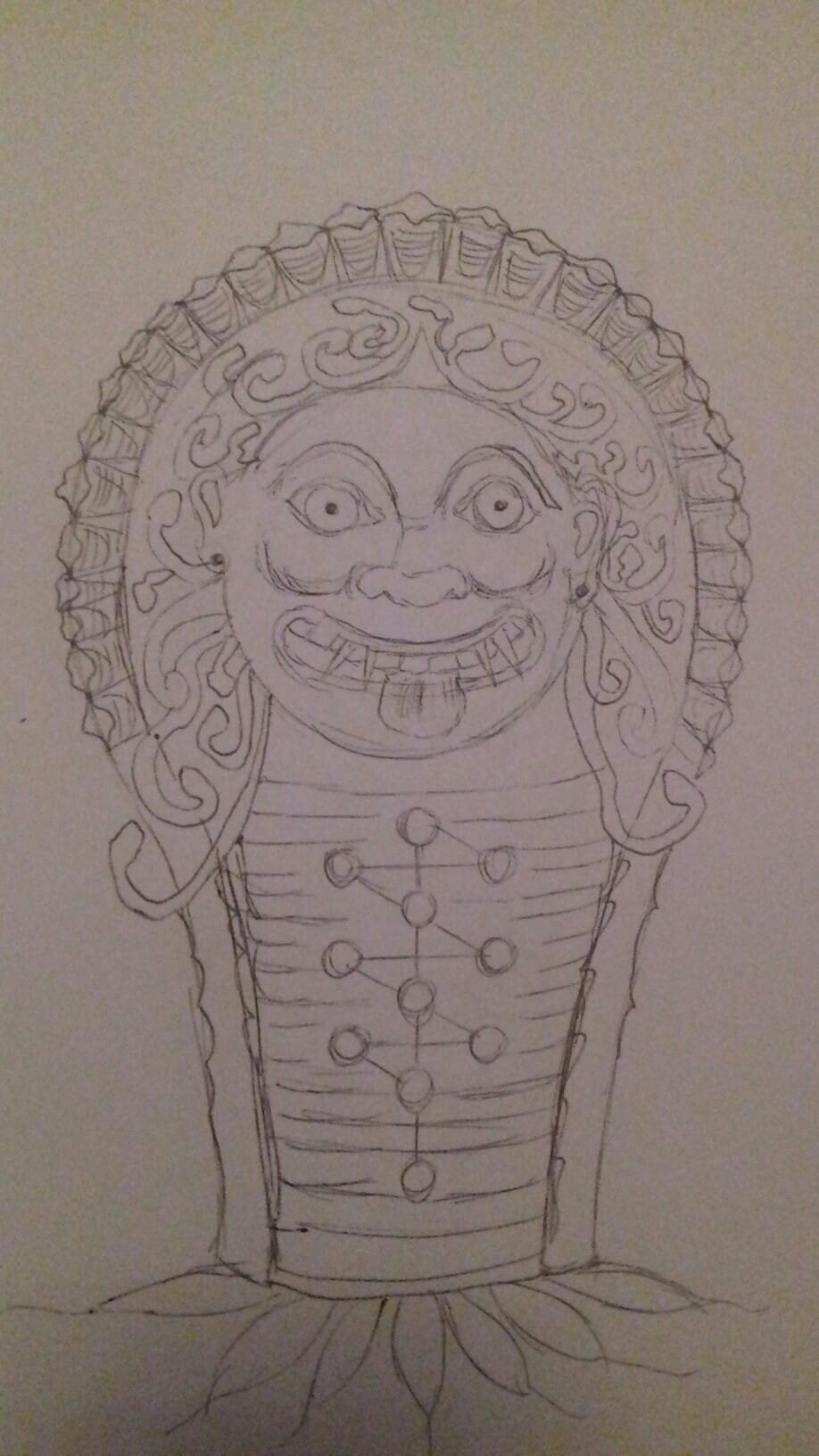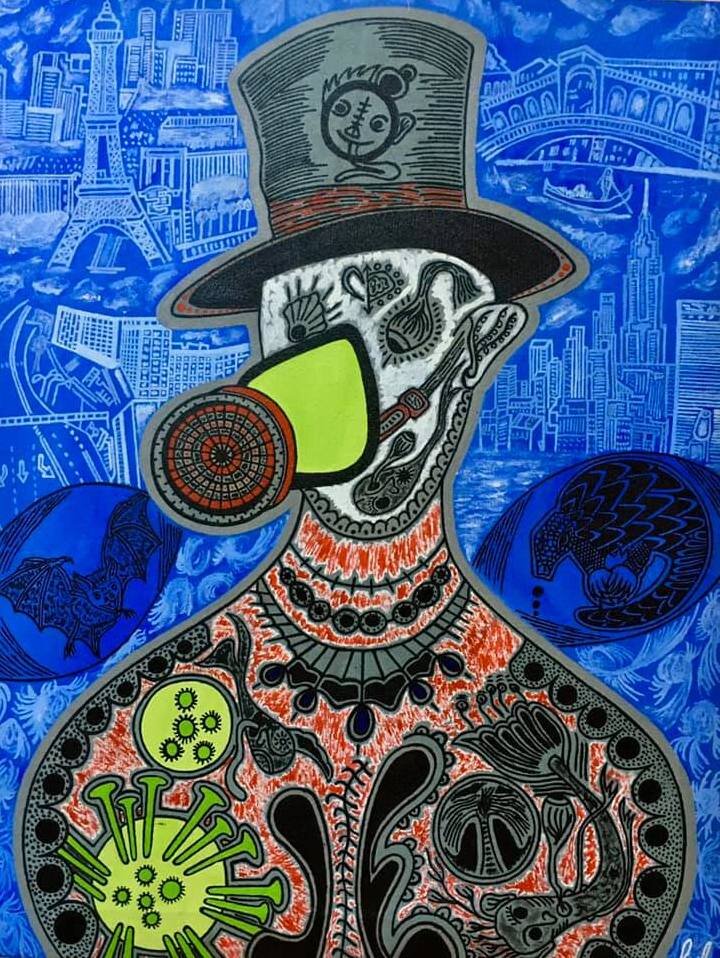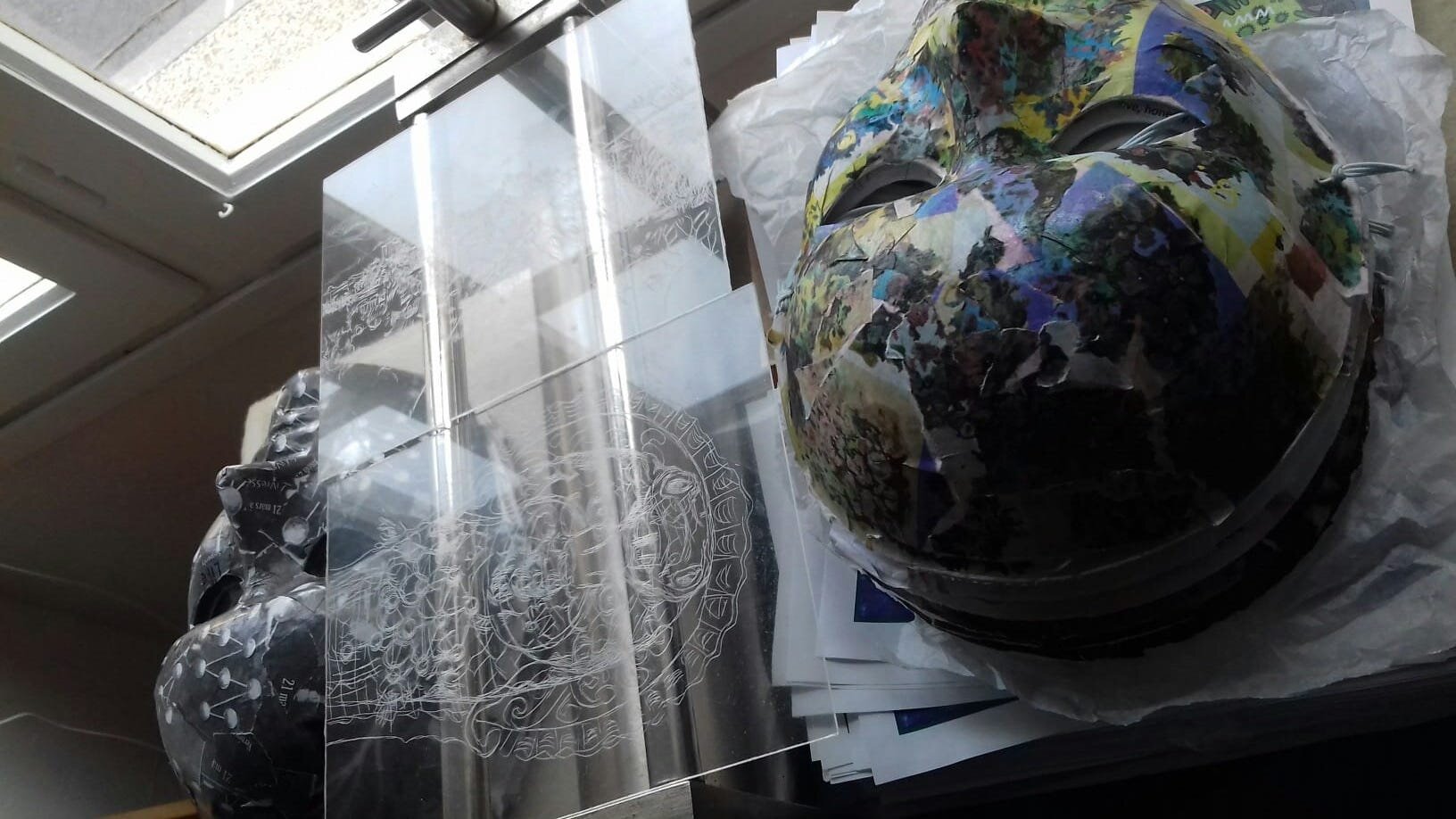Cameron White
LOCKDOWN: In search of lost breath
LOCKDOWN/CONFINEMENT : À la recherche des souffles perdus
As of today, 21/09/2020, ‘LOCKDOWN’ is closed. As an exhibition it was curated in May and June 2020 and opened on 01/08/2020. I had envisaged, in June, that by the time the exhibition had finished, that the COVID-19 pandemic would also be a thing of the past and that I would be recovered. Neither thing is true and La Vienne and Paris have been declared Red Zones of infection as of today. I wish it were otherwise. Annett September 2020.
“In July 2020 Cameron White, a student of Modern and Medieval Languages and Linguistics at St Catharine’s College at the University of Cambridge, (UK), agreed to undertake the creation of a critical text in response to the exhibition LOCKDOWN. White has previously visited and stayed in the ATELIER MELUSINE so has a particular memory of its spatial and architectural presence.
This exhibition has been curated and excecuted entirely online during the period of confinement due to COVID-19, so the conceit of the piece was to also write the text remotely, viewing artworks via digital links and interviewing artists and visitors on line using Skype or Zoom. It has proved to be an especially rewarding, thoughtful practice and a time rich piece of work and research, mirroring and extending the realworld outcomes. The interviewing at length not only of the artists, curators but the audience, as well as cross referencing the texts of other authors/critics/artists provides a particularly broad, intimate and descriptive level of feedback and continued a valuable extra layer of remote collaborative practice.”
(Annett September2020).
Edited by Annett
Photography Annett and Annett-Parish
LOCKDOWN: In search of lost breath
Much like Proust’s search for lost time in the nineteenth century, the ATELIER MELUSINE’s latest exhibition brought together a group of artists who have suffered, first-hand, from the coronavirus pandemic, contributing towards a spiritual and esoteric quest for lost breath in their respective works.
Pierrepaul (Haiti). Acrylic on Canvas. 2020. ‘The Loyal Gentleman of COVID-19’. Poster image for the show
Image above. Visitors exploring the journals and drawings of Annett-Parish and Perrotta in the ‘LOCKDOWN’ exhibition in ATELIER MELUSINE August 2020. Photo. Annettt.
The exhibition opened on 01 August and continues on until 21 September 2020.
The visitor interpretation states that the exhibition’s intention is to provide “an immersive experience which [would allow its] audience to enter into meditative and ritualised practices/spaces, presenting different perspectives on and of the function of breathing and surviving in a pandemic”. It deals with “confinement in a digital age, suffocation and the salvation of breath and breathing”, as well as “the reality of suffering from poor political leadership during a crisis and the mystical elements around illness and hypoxemia [insufficient oxygen levels in the blood]”.
In interviewing Sally Annett, the curator of LOCKDOWN and creator/producer of the ATELIER MELUSINE, it became apparent that ‘transformation’ was a fulcrum of the exhibition, drawing attention to the intended transition of the audience from “coronavirus babies to coronavirus adults”. LOCKDOWN is an educational experience, which enables its audience to map the journey of those who had suffered from the pandemic first-hand, by viewing an array of personally-informed works which document both the physical andpsychological consequences of the virus.
Annett/Annett-Parish
Image. Annett stands before an eerily dilapidated pharmacy during the lockdown period, providing a rather sinister interpretation of the spectre of coronavirus. Photo. Annett-Parish.
The physical process of suffering with COVID-19 was explored in Annie Abrahams’ sound work ‘Pandemic Encounter’. This work consisted of an empty bed draped in white lined in the centre of a room surrounded by pale, ephemeral, floral wall prints by Annett and [Morgan] Annett-Parish. Their pressed and crushed structures paralleling the crushing pain of lungs without air. The room is otherwise filled only with a recording of laboured breathing mixed with distorted, computerised heartbeats played from a speaker system. ‘Pandemic Encounter’ has given its visitors an extremely uncomfortable experience; they are left alone in the gallery to confront the harsh realities of the physical terror of the virus’ side effects, underpinned by the aforementioned tropes of “suffocation” and the mystery “around illness and hypoxemia”. It raises questions? Why is the bed empty, and who is breathing? One could be left to conclude that the victim to whom the bed belonged has died and we are thus in an unsettling zone which shakes up boundaries of temporality, listening to their dying moments as we mourn their loss and reflect upon an unknown generic person who stands to symbolise the virus’ victims.
Gemma Forshaw, who visited the free-entry exhibition, felt that this work was the stand-out aspect of the exhibition; it allowed her to “be in the illness with them” and catch a visceral glimpse at the illness as an ‘outsider’. If you wish to proceed to a more detailed analysis of ‘Pandemic Encounter’, Elizabeth Stewart’s review illustrates it well.
Abrahams, ‘Pandemic Encounter’ Installation with ‘Lungs and Wings’ Annett and Annett-Parish
Abrahams, ‘Pandemic Encounter’ Installation with ‘Lungs and Wings’ Annett and Annett-Parish
Conversely the psychological effects of the virus were explored by Annett’s ‘internet-artistic-sister’, Nadia Perrotta. The visitor summary highlighting Annett’s and Perrotta’s sorority as “one of the positives which have emerged from the crisis”; both were hospitalised due to COVID-19 and found that they had shared similar experiences with their illnesses in terms of the thematics they make use of in their artistic processes. For instance, the Mermaid which Perrotta embodied in her haunting performance of a poetic work entitled ‘H.J. and the Mermaid of the Estuary - Golem’s Warning’, which “[explored] the themes of transformation, accelerated evolution and amphibianism [...] [while raising] the possibility of a new human ability to breathe out of water”, related directly to Annett’s feeling that “she now must be amphibious because [she] can breathe with such low oxygen levels”. Additionally, it references the siren-like Mélusine after which the atelier is named and is the subject of Annett’s PhD studies.
Perrotta. Live performance of ‘H.J. and the Mermaid of the Estuary’. 01/08/2020/
Image above. Still of Nadia Perrotta’s performance. Photo. Annett
This work, Forshaw described as being made all the more profound by Perrotta’s intense, fully eye contacted, stare throughout the performance, heightened by the cave-like setting of the room in which it was staged, thus endeavours to explore the psychological consequences of coming to terms with the life-changing coronavirus, which seemingly has the ability to transform its survivors into hybrids of breath. However, one should not only analyse the transformation of the audience, but also that of methodology. Annett revealed during the interview that this exhibition offered her “a new space in [her] critical thinking and technology [...] To examine certain ideologies”, of which the prints she made with Annett-Parish, ‘Wings or Lungs’, are an example. These prints constituted one of the exhibition’s foundations since they were scattered throughout the atelier; having a meticulous double meaning as their title suggests. One can see in them, on the one hand, lung scans, representing those that Annett had during her hospital treatments in Montmorillon and Poitiers, whilst on the other, the prints have the appearance of a set of wings, converting Corona virus into a beautiful metaphor. This is exquisitely demonstrated in the image of Perrotta standing in front one of the prints as if the wings on the wall are sprouting from her shoulder. The prints contain a subtle touch of hope, by allowing the possibility of outgrowing the virus and flying far away from it - there thus exists a hidden message here that it is possible to become stronger after suffering from the horrors of COVID.
Perrotta in front of Annett’s ‘Wings and Lungs
In terms of methodological transformation, these prints demonstrated ingenuity, since the prints were made using only dying flowers picked from the gardens of the ATELIER MELUSINE. This is a fascinating contextual element of the work, which elevates its power to convey Annett’s personal experience, since the work is made from ‘home-grown produce’, with the moribund state of the flowers mirroring the two occasions on which Annett had painfully been believed to be found dead during her illness.
The exhibition also drew strength from the spatiality of the ATELIER MELUSINE’s architecture. As aforementioned, the cave-like setting in which Perrotta performed is a room that was originally part of an old castle, thus amplifying her performance with an earthly quality, the floor and the walls are of living rock and earth.
In addition, Annett made it compulsory for each visitor to maintain a social distance and wear a face covering, while assuring a reduced capacity. For Annett, PPE created another performative dimension, which in turn gave Forshaw the opportunity to share what she describes as a more intimate experience. of contemporary artwork. For her, this opportunity was particularly important in the sound installation ‘Pandemic Encounter’, and an entirely different experience than one of going to an overcrowded art gallery where “all meaning is easily lost in the throb of the crowd”.
Forshaw also highlighted that visitors were invited to wait up in the atelier’s rooftop gardens during the exhibition, whilst small groups spent time in the interior spaces. The first thought which came to her as she emerged from the spaces below to reach the green rooftop terraces was that she was “grateful for [her] ability to breathe” in “an area of tranquility at the centre of a busy village [La Trimouille]”.
The second of ATELIER MELUSINE’s four terraces.
Elsewhere, Forshaw enjoyed the “messy” pile of Perrotta and Annett-Parish’ drawings and paintings, ‘Work on tables [Travail sur tables]’: a collection of daily journals and texts, documenting their respective but isolated experiences of a “serious illness” and “100% lockdown”. She judged that its “neat but wild” organisation helped to provide an accurate portrayal of the chaos and helplessness of living under the tyranny of the virus.
Perrotta’s Journals (table top works), Annett ‘Wings or Lungs’, (walls and easels)
Forshaw in the Inkroom gallery. Table tops - Masks for performance, Annett. Walls, ‘Wings or Lungs’, Annett.
Annett-Parish. Journal. Treated object. 2020
Annett added that she was not ready to share her journal entries at the time of the exhibition’s opening, and found it “too painful” when she (re)-read them for the first time, explaining that her journals even include “repeated prayers in dead languages [Phoenician and Proto-Hebraic] in order to stay alive and guarantee [her] children’s safety”, such were here levels of illness, disassociation and terror.
Annett ; ‘Hypoxemia and Hallucination - Bee Chimera’
The exhibition also showcases a beautiful and colourful, printed, reproduction of the canvas acrylic; ‘The Loyal Gentleman of COVID’ by Haitian artist Lesley Pierrepaul, whose experience of lockdown at times “has been one without electricity [...] Light [...] Clean water [...] sanitation and only partial internet connectivity”. It emphasises the different global experiences of the pandemic, but also the hope, contact and interpersonal links provided by the internet. Annett describes Pierrepaul’s work, which references magical practice and living Voodoo traditions as being “one of the strongest representations of life and hope alongside death and transformation”. She continues: his works “are spells [and] prayers”.
Lesley PierrePaul
Image. New works :‘‘The Loyal Gentlemen of COVID’ by Lesly Pierrepaul.
A screening of the film ‘Gustaf Broms: The Mystery of Life’ by Carl Abrahamsson has been rescheduled, to be shown in November 2020, at the ATELIER MELUSINE. The film explores the “multifaceted expressions of Broms work” of identifying the ‘self’ in the human being, who we are as humans, the tools required for answering this question, and the function of breath in meditation.
Still from ‘Gustaf Broms - The Mystery of Life’. Abrahamsson. 2016
Annett is now preparing to re-open the doors of the ‘LOCKDOWN’ exhibition as part of the Journées européennes du patrimoine 2020 on Saturday 19th and Sunday 20th September.
Still adapting to the new normality of this vaccine-less virus, Annett is currently working on hybrid paintings of the hallucinatory snake which approached her during the nadir of her illness. Annett comments that they are “nasty and clumsy paintings - super graphic at the moment - [which] convey the internal experience of [...] Dying from suffocation and the way in which the body fights back”.
“The snake, at the beginning, appeared completely externally [and brought] the message that one cannot beat the virus, but can only integrate it”. Annett says that “luckily, she was aware of the fact that these visions were the consequence of a long-term lack of oxygen”, showing interest in the scientific process whereby “this lack [of oxygen] pushes the brain to produce an excess of DMT, which stimulates the visual cortex”.
Below; Sketches and pages from Annett’s journal April 2020
Annett
Image. ‘The Nasty Gentlewoman of COVID’, depicts a face writhing in agony, integrated into a cobra’s head. August 2020. Annett.
It is this attitude of acceptance and integration that underpins a spirited collaborative exhibition, which seeks to educate and re-live the horrors of pandemic, allowing both artist and audience a zone of meditation and therapeutic contemplation as they embarked on a search for lost breath of the pandemic.
Cameron White. September 2020.
ATELIER MELUSINE is an artist led studio and gallery, located in central France and is the sister space to A & H Contemporary Arts (UK). It provides studio and exhibition space for international contemporary artists across all disciplines. It aims to produce a minimum of six exhibitions per year and support arts inquiry and thinking time for artists and researchers. The studio hosts individual artists residencies throughout the year alongside its curated programme of exhibitions and runs courses in painting, printmaking and life-drawing. To support ATELIER MELUSINE, please visit this link.
For further information please go to www.atelierdemelusine.com
Installation of works in preparation for the Journee Patrimoine European
LOCKDOWN: À la recherche des souffles perdus
Par Cameron White (septembre 2020)
À compter d'aujourd'hui, le 21/09/2020, "LOCKDOWN" est fermé. L'exposition a été organisée en mai et juin 2020 et a été inaugurée le 01/08/2020. J'avais envisagé, en juin, qu'à la fin de l'exposition, la pandémie de COVID-19 serait aussi une chose du passé et que je serais rétabli. Rien de tout cela n'est vrai et La Vienne et Paris ont été déclarées zones rouges d'infection dès aujourd'hui. J'aimerais qu'il en soit autrement. Annett
Traduit avec www.DeepL.com/Translator (version gratuite)
En juillet 2020 Cameron White, étudiant en français et de langues médiévales à St Catharine’s College à l’Université de Cambridge, au Royaume-Uni, s’est mis d’accord pour créer un texte critique qui réagirait à l’exposition LOCKDOWN. White a auparavant visité l’ATELIER MÉLUSINE et y a resté, ayant donc une mémoire particulière de sa présence spatiale et architecturale.
On a préparé et réalisé cette exposition complètement en ligne pendant la période de confinement dûe à la COVID-19, donc le concept de ce texte était de l’écrire de loin aussi, en regardant les oeuvres virtuellement et en interviewant les artistes et visiteurs en ligne sur Zoom. Il s’est avéré particulièrement enrichissant et un morceau de travail et recherche qui est riche de sa contemporanéité, reflétant des conséquences concrètes. Les interviews détaillées non seulement avec les artistes et conservateurs, mais avec le public également, en tandem avec des renvois aux textes d’autres auteurs, fournissent un niveau de réaction particulièrement varié, intime et descriptif, contribuant à une couche supplémentaire précieuse de pratique lointaine et collaborative. (Annett, septembre 2020).
“Annett est personnellement de l’opinion qu’on “ne peut pas vaincre ce virus - chaque individu l'intégra de manière spécifique et personnelle”.” White, septembre 2020)
Annett. Masks and etchings on perspex 2020
Tout comme Proust était à la recherche du temps perdu au dix-neuvième siècle, la dernière exposition de l’ATELIER MÉLUSINE a rassemblé un ensemble d’artistes qui ont souffert directement de la pandémie, afin qu’ils aient pu contribuer à une recherche spirituelle et ésotérique des souffles perdus à travers leurs travaux respectifs.
Le texte de l’exposition, qui a ouvert le 1er août et gardera ses portes ouvertes jusqu’au 21eme septembre 2020, a déclaré que ‘LOCKDOWN’ a pour but la mise en place d’une “expérience immersive qui [permettrait à son] public d’entrer dans des pratiques/espaces méditatifs et ritualisés, présentant différentes perspectives sur la fonction de la respiration et de la survie en cas de pandémie”. Tout en abordant “l’enfermement à l'ère numérique, l'étouffement et le salut du souffle et de la respiration”, ainsi que “la réalité de la souffrance d’un mauvais leadership politique pendant une crise et les éléments mystiques autour de la maladie et l'hypoxie [une condition où le sang contient un niveau bas d'oxygène]”.
Dans un interview avec Sally Annett, conservatrice de LOCKDOWN et propriétaire de l’ATELIER MÉLUSINE, il est devenu évident que la transformation agissait comme le point de l’appui de l’exposition, en mettant l’accent sur la transition prévue de son public entre “bebes du coronavirus” et “adultes du coronavirus”. LOCKDOWN est une expérience éducative qui permet à son public de suivre le voyage de ceux qui avaient souffert directement du coronavirus, en leur donnant à voir une variété d’œuvres personnellement éclairées, qui rendaient compte à la fois des conséquences physiques et psychologiques du virus.
‘Pandemic Encounter’ Sound installation by Annie Abrahams.
Par exemple, l’installation sonore d’Annie Abrahams, ‘Pandemic Encounter’, a exploré le processus physique de la souffrance de la COVID-19. Dans cette œuvre, il s’agit d’un lit vide couvert de draps blancs au milieu d’une pièce entourée par des imprimés floraux pales et éphémères sur les murs, faits par Annett et [Morgan] Annett-Parish; leurs structures pressées et écrasées coïncidant avec la douleur écrasante de poumons sans air. La pièce est autrement remplie d’un registrement de respirations pénibles mélangées avec des battements de coeur déformés générés par ordinateur, qu’on diffuse par le biais d’une sonorisation.
Annett-Parish installing the ‘Wings or Lungs’ wall-covering for the ‘Pandemic Encounter’ installation by Abrahams
‘Pandemic Encounter’ a donné à ses visiteurs une expérience extrêmement inconfortable: ils sont laissés seul à faire face à la terreur physique des effets secondaires du virus, étayée par les thèmes mentionnés ci-dessous de “l'étouffement” et du mystère qui entoure “la maladie et l’hypoxie”.
Pourquoi le lit est-il vide, et qui respire? On pouvait conclure que la victime à qui appartient le lit est morte, et par conséquent le public se trouve dans une zone déconcertante qui chamboule la temporalité; ou on est obligé d'entendre ses derniers soupirs et de la pleurer, en réfléchissant à une personne inconnue qui sert à symboliser les victimes du virus. Aux yeux de Gemma Forshaw, qui a visité l’exposition avec entrée gratuite, ‘Pandemic Encounter’ s’est distingué des autres oeuvres, parce qu’elle lui a permis “d’entrer dans la maladie avec elles [les victimes]”, lui donnant un aperçu viscéral au virus en tant que ‘quelqu’un de l'extérieur’.
Si vous voudriez procéder à une analyse plus détaillée de ‘Pandemic Encounter’, la revue (en anglais) d’Elizabeth Stewart l’illustre bien.
Image from Perrottas performance of /The Mermaids Song and the Golem’s Warning. Annett 01.08.2020
De l’autre côté, les effets psychologiques du virus étaient explorés par la ‘soeur artistique en ligne’ d’Annett, Nadia Perrotta. Le texte de l’exposition a souligné leur sororité comme “l’un des points positifs qui ont émergé de la crise”. Toutes les deux avaient été hospitalisées à cause de la COVID-19, et ont trouvé qu’elles partagent des points communs dans leur expériences de la maladie, ainsi que dans les thèmes dont elles se servent dans leur processus artistiques. Par exemple, la sirène que Perrotta a incarnée pendant sa performance obsédante du poème intitulé ‘H.J. and the Mermaid of the Estuary - Golem’s Warning’, qui, selon le texte de l’exposition, “[a exploré] les thèmes de la transformation, de l'évolution accélérée, et de l’amphibianisme [...] [en soulevant] la possibilité d’une nouvelle capacité humaine à respirer hors de l’eau”, avait beaucoup à voir avec l’avis d’Annett que “maintenant [elle doit] être amphibie parce que [elle peut] respirer à des niveaux d'oxygène si bas”, et avait à voir aussi avec la sirène, Mélusine, qui est le sujet du doctorat d’Annett.
Image from Perrottas performance of /The Mermaids Song and the Golem’s Warning. Annett 01.08.2020
Visitors to Perrotta’s Installation. 19/09/2020. Annett
Forshaw a trouvé que le regard intense et à plein contact visuel de la sirène (Perrotta), et le cadre où on a monté sa performance, qui avait l’air d’une grotte, ont fait de cette performance une expérience d’autant plus profonde; une expérience qui visait à dénicher les conséquences psychologiques de faire face au coronavirus bouleversant, qui de toute évidence possède la capacité de transformer ses survivants en hybrides de la respiration.
Toutefois, on ne devrait pas seulement analyser la transformation du public, mais également celle de la méthodologie. Annett me l’a révélé pendant l’interview que cette exposition lui a fourni “un nouvel espace dans [sa] pensée critique et technologie [...] pour examiner certaines idéologies”, dont les tirages qu’elle a réalisés avec Annett-Parish, ‘Wings or Lungs’, sont un exemple. Ces tirages constituaient l’un des fondements de l’exposition puisqu’on les a dispersés d’un bout à l’autre de l’Atelier; ayant un double sens méticuleux comme leur titre le suggère.
Annett and Annett-Parish ‘Wings or Lungs’
L’ambiguïté demeure présente. On peut y voir, d’un côté, des scanographies de poumons, représentant celles qu’Annett a eues pendant qu’elle était hospitalisée à Poitiers. Pourtant, à la même fois, les tirages avaient aussi l’air d’une paire d’ailes, qui font du coronavirus un beau métaphore. Comme on voit ci-dessous dans la photo où Perrotta pose devant l’un des tirages comme si les ailes sur la mur poussent sur elle, les imprimés avaient une lueur subtile d’espoir, en permettant la possibilité de dépasser le virus et de voler loin de lui - il existe ici un message enfoncé qu’il est possible de devenir plus fort après avoir souffert des horreurs de la COVID.
Quant à la transformation méthodique, ces tirages démontraient de l'ingéniosité, car on les a faits en n’utilisant que des fleurs mourants cueillis du jardin de l’Atelier - ceci est un élément fascinant sur le plan contextuel qui permet à transmettre de façon plus puissante les souffrances personnelles d’Annett, parce que les outils étaient ‘du jardin’, et la condition moribonde des fleurs reflètent les deux fois douloureux où Annett-Parish, le fils d'Annett, croyait avoir trouvé sa mère morte pendant sa maladie.
L’une des forces de l’exposition était la spatialité de l’architecture de l’ATELIER MÉLUSINE. Comme on l’a vu ci-dessus, le cadre dans lequel Perrotta effectuait sa performance avait l’air d’une grotte parce que la pièce faisait partie à l’origine d’un vieux château, avec le sol et les murs humides et en pierre vivante; une qualité qui a enrichi sa performance en y ajoutant une texture terrestre. En outre, Annett a obligé chaque visiteur à maintenir une distanciation sociale, avec un port du masque obligatoire, tout en assurant une capacité réduite. Pour Annett, les équipements de protection personnelle ont créé une autre dimension performative, qui a donné à Forshaw l’opportunité de partager une expérience plus intime avec autrui. Pour elle, cette opportunité était particulièrement importante dans l’installation sonore ‘Pandemic Encounter’, par opposition à aller à une galerie d’art surpeuplée où “tout sens peut se perdre facilement parmi la pulsation d’une foule”.
Forshaw a également souligné que les visiteurs étaient invités à déambuler dans le jardin sur le toit de l’ATELIER MÉLUSINE après avoir vu l’exposition. La première pensée qui lui est venue à l’esprit en émergeant des espaces au-dessous pour parvenir aux terrasses vertes sur le toit ? Elle était “reconnaissante pour [sa] capacité de respirer” dans “une région de tranquillité au centre d’un village animé [La Trimouille]”.
Ailleurs, Forshaw a apprécié le tas “mal rangé” de l’oeuvre de Perrotta et Annett-Parish, ‘Work on tables [Travail sur tables]’: une collection de journaux quotidiens sur leurs expériences respectives d’une “maladie grave” et de “l’enfermement à 100%”. Elle a jugé que son organisation “ordonnée mais sauvage” a aidé à fournir un portrait précis du chaos et de l’impuissance de vivre sous la tyrannie du virus.
Leaves from Perrotta’s Jounal pages.
Annett a ajouté qu’elle n’était pas prête à partager ses journaux à l'époque de l’ouverture de l’exposition, et l’a trouvé “trop douloureux” quand elle les a lus pour la première fois la semaine dernière, expliquant que ses journaux comprennent même des “prières répétées dans des langues mortes [phénicien et proto-hébraïque] afin de rester en vie et garantir la sécurité de [ses] enfants”.
Annett-Parish. Interior page from Journal.
Elle vient de créer des oeuvres publiques qui traitent ce moment difficile, pendant lequel elle a souffert des hallucinations éveillés liées à l’hypoxie pour plusieurs semaines.
Sketch from Annett’s Journal of a she cobra. April 2020
Annett. ‘Wings or Lungs’ - Old Rose and Mimosa’. Embossed flora on paper. June 2020
En plus des oeuvres mentionnées dans cet article, l’exposition a aussi compris la toile ‘The Loyal Gentleman of COVID’ par l’artiste haïtien Lesley Pierre Paul, dont l'expérience du confinement a été “sans électricité [...] lumière [...] eau propre [...] sanitaires [...] et avec une connectivité internet partielle seulement” selon un page web de l’ATELIER MÉLUSINE, et dont le travail est “l’une des représentations les plus fortes de la vie et de l’espoir aux côtés de la mort et de la transformation”. Annett continue: ses oeuvres “sont des sorts [et] des prières”.
Pierrepaul working on the ‘Loyal Gentlemen of COVID’ series. Septembre 2020. Haiti
On a replanifié une projection du film ‘Gustaf Broms: The Mystery of Life’ par Carl Abrahamsson, qu’on montra au ‘festival Open Online Theatre’ (OOT) en novembre 2020. Le film explore “les multiples facettes de son travail”, y compris l’identification du ‘soi’ dans l'être humain, qui nous sommes comme humains, les outils requis afin de répondre à cette question, et se concentre sur la fonction de la respiration dans la méditation.
Carl Abrahamsson. Still from the film ‘Gustaf Broms - The Mystery of Life’ 2016.
Maintenant, Annett se prépare à rouvrir les portes de ‘LOCKDOWN’ pour participer aux Journées européennes du patrimoine 2020, qui se dérouleront samedi 19eme et dimanche 20eme septembre.
Encore s’adaptant à la nouvelle normalité de ce virus sans vaccin, Annett travaille actuellement sur des peintures hybrides du serpent hallucinatoire qui lui approchait pendant le point le plus bas de sa maladie. Annett a remarqué que ce sont “des peintures mauvaises et maladroites - super crues en ce moment - [qui] transmettent l'expérience intérieure de [...] mourir de la suffocation et la manière dont [son] corps se défendait”.
Annett. ‘Hypoxemic Vision 1’. Acrylic on Canvas 2020
“Le serpent, à l’origine, apparaissait complètement à l'extérieur [et a apporté] le message qu’on n’arrive pas à vaincre le virus, mais seulement à l'intégrer”. Annett dit que “heureusement, elle était consciente du fait que ces visions était la conséquence d’un manque long-terme d’oxygène”, s'intéressant au processus scientifique où “ce manque [d’oxygène] pousse le cerveau à produire un excès de diméthyltryptamine, qui stimule le cortex visuel”. Annett a ajouté qu’elle lui a offert ses mains et lui a permis de “mordre [ses] poignets fort” dans un “rituel d’acceptation/d'intégration” - le venom équivalant directement aux pathogènes.
Et ce sont l'acceptation et l'intégration qui ont mené à une exposition collaborative et pleine d’allant qui cherchait à informer et revivre les horreurs de la pandémie; offrant à la fois à son public et ses artistes une zone de méditation et de contemplation thérapeutique pour qu’ils aient pu aller à la recherche des souffles perdus de la pandémie.
Annett. Masks in Public Spaces June 2020. Photo. Annett-Parish
L'Atelier de Mélusine est un atelier et une galerie, animé par des artistes du centre de la France et est l'espace frère de A & H Contemporary Arts (UK). Il offre des ateliers et des espaces d'exposition pour les artistes contemporains internationaux de toutes les disciplines. Il vise à produire un minimum de six expositions par an et à soutenir les artistes et les chercheurs dans leurs recherches et leurs réflexions sur les arts. L’Atelier de Mélusine accueille tout au long de l'année des résidences d'artistes individuels en parallèle de son programme d'expositions et organise des cours de peinture, d'estampe et de dessin sur le vif. Vous pouvez le soutenir ici.
Annett. Writing on the Walls - Hypoxemia and Hallucinations 2020
















